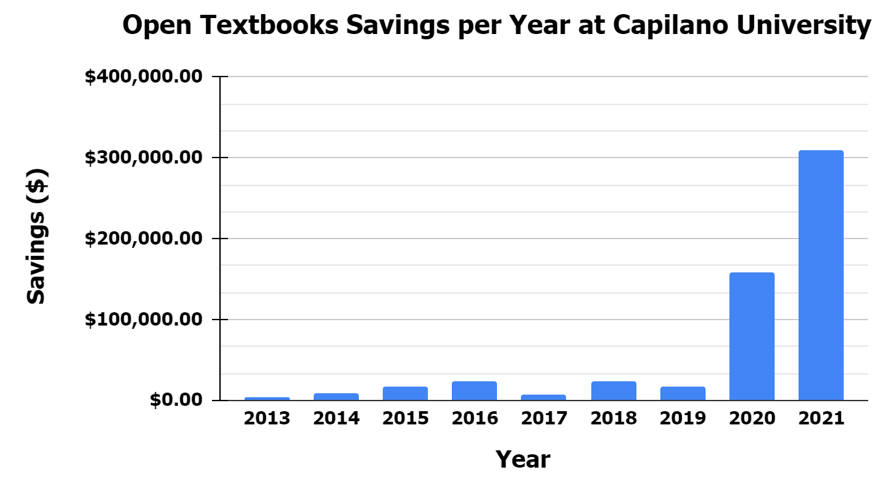What Are Open Educational Resources (OERs)?
Open Educational Resources (OERs) are freely accessible educational materials used in instructional, learning and research environments. Furthermore, they are recognized as openly licensed and can be created, reused, remixed, and have sections adapted for different purposes without the need to work around or adhere to lengthy copyright regulations (BCCampus).
What Are Some Examples of OERs?
A few examples of Open Educational Resources are open assignments, audio clips, online videos, and open textbooks, etc. (BCCampus).
What Are Open Textbooks?
Open textbooks are a subtype of Open Educational Resources (OERs) that are public domain. These textbooks can be accessed in a digital, online, or shareable format, such as a PDF (BCCampus). Additionally, unlike traditional textbooks, they may be “modified, printed, shared, retained, remixed, and reused” (BCCampus).
The Start of Tracking Open Textbooks at Capilano University
In 2020, I started as a Student Research Assistant at the Centre for Teaching Excellence. The first task I undertook was the establishment of a database to track and host the adoption of open textbooks at Capilano University. Over the past year, data on the adoption of open textbooks were compiled from the fall of 2013 through the fall semester of 2021.
Why Does Implementing and Tracking Open Textbooks Matter?
In the fall of 2013, a single textbook was implemented at Capilano University in the Department of Psychology, saving 38 students a total of $4,560.00. Every year since the implementation of that single textbook, the number of open textbooks and savings per year for students has steadily increased across different program areas. Despite this moderate growth, awareness and adoption of open textbooks have not diminished and have more than doubled over the past year. In 2020, 32 courses implemented open textbooks, saving $157,848.95 for 1,092 students. This number doubled in 2021 when we tracked 69 courses that had implemented open textbooks. This enabled 2,118 students to save $308,785.89 in textbook expenses. The following chart illustrates the exponential (chart 1) shows that there is an increasing trend for the adoption of open textbooks and textbook savings for students at the University of Capilano.

Chart 1
How Does Adopting Open Textbooks Impact Students?
- Save students money that they can use on rent, food, mental health resources, and tuition
– Allows students to register for another course that they otherwise could not have afforded
– Students can work fewer hours or take on less debt to be able to gain access to a textbook
– Grant access to the textbooks that students could not afford to purchase
– Enable instructors to edit the textbooks to remix and adopt pronouns, race, culture, and gender changes to address equity, diversity, and inclusion-related issues
How to Get Involved in Using or Adopting Open Textbooks at Capilano University?
If you would like to adopt an open textbook for a course or learn more, please email cte@capilanou.ca.
Useful Links:
https://open.bccampus.ca/what-is-open-education/what-are-open-educational-resources/
https://open.bccampus.ca/browse-our-collection/find-open-textbooks/
https://open.bccampus.ca/use-open-textbooks/tell-us-youre-using-an-open-textbook/
https://open.bccampus.ca/browse-our-collection/other-open-textbook-collections/
https://opentextbc.ca/oerdiscipline/chapter/general-oer-repositories/
By Alea Rzeplinski, Centre for Teaching Excellence Student Research Assistant
Graphic from Pixabay

Recent Comments